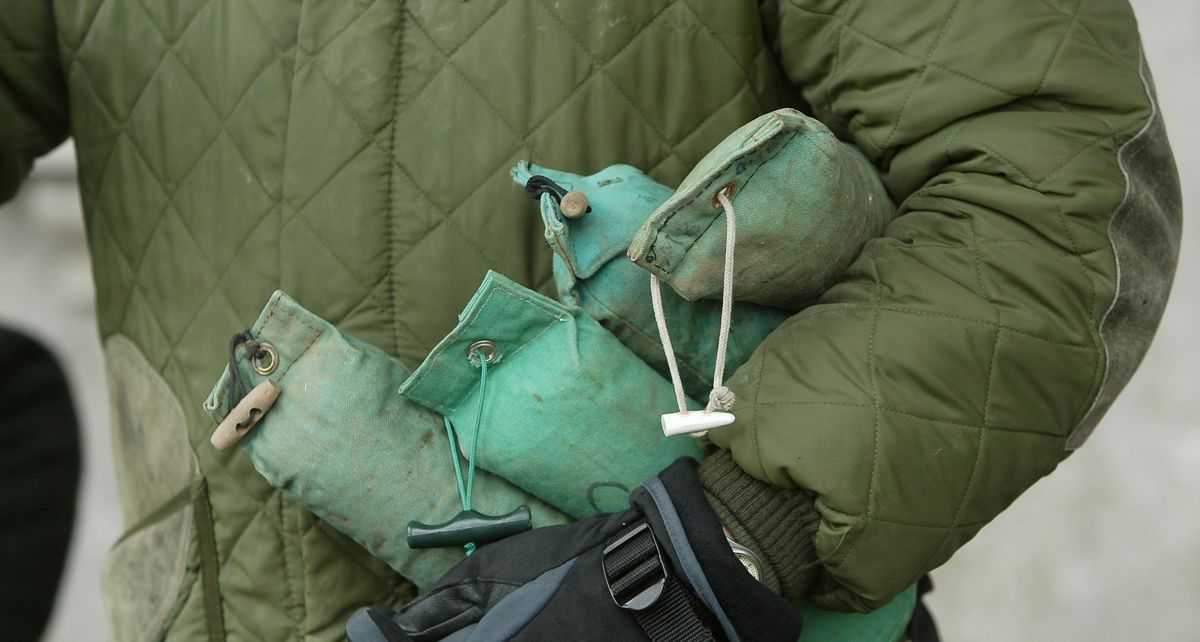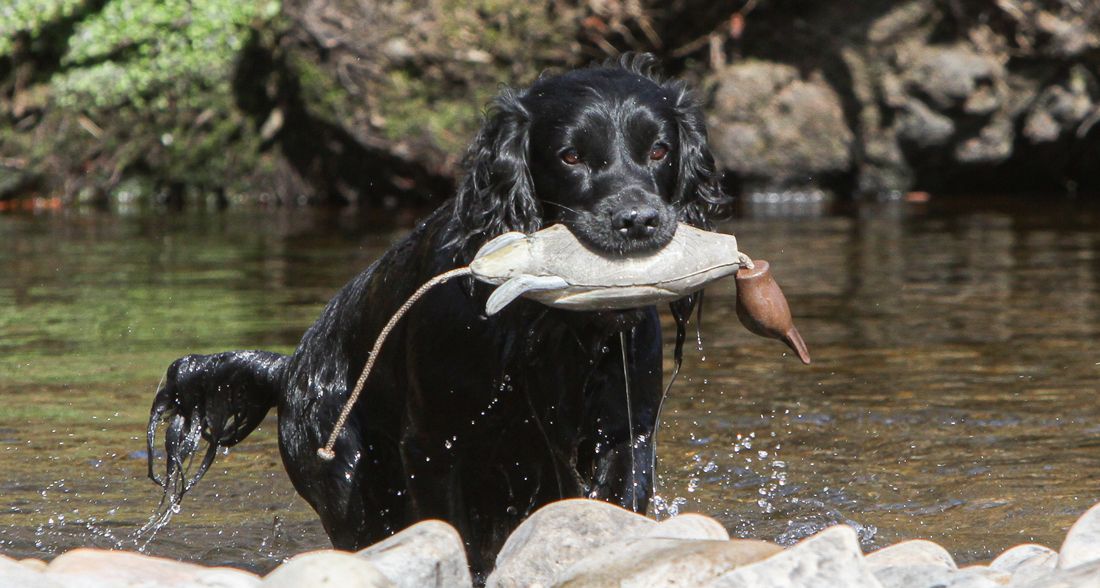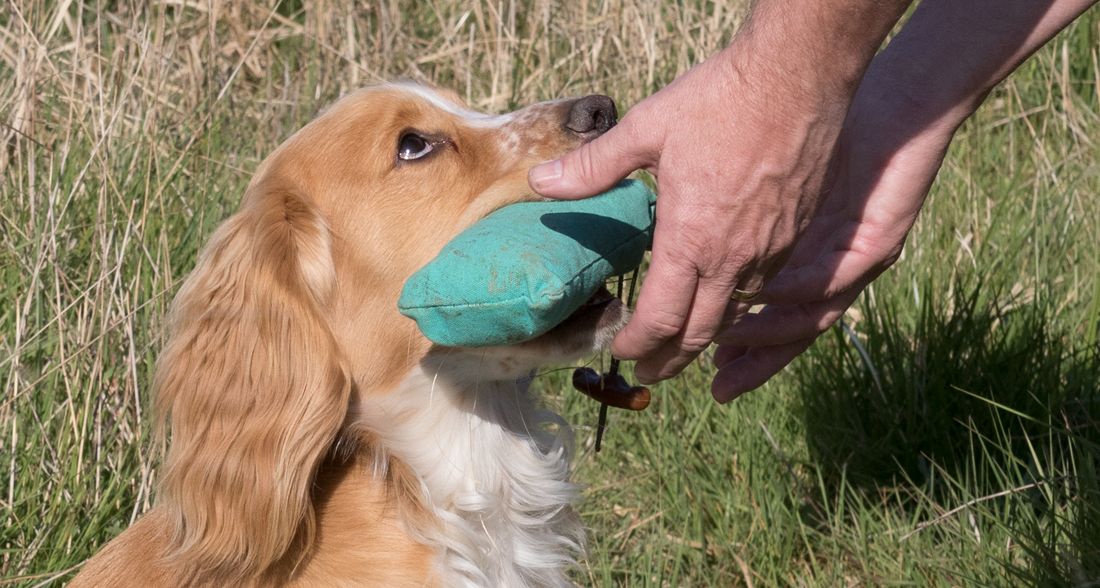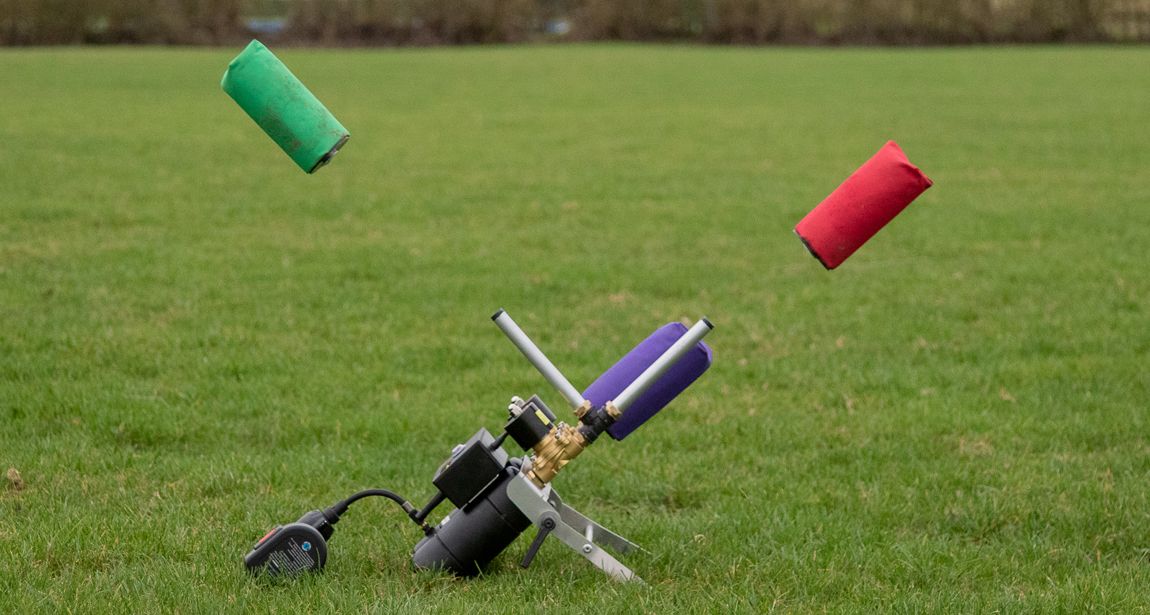Shotgun Shooting
Get the right gear for your gundog training
You may think you need a lot of equipment for your gundog training. You don’t. Here is a guide to the essentials.
Take a look at any gundog training equipment catalogue and the number of products available to help train your budding gundog can be quite bewildering. In recent years it seems that every month there is a new hi-tech ‘gadget’ that will help solve all sorts of problems.
The various options can be bewildering to the novice trainer but in truth you really only need some basic equipment and a good imagination.

WHISTLE WHILE YOU WORK
Using a whistle in dog work is pretty unique. In fact I can only think of two disciplines – gundogs and sheepdogs – and in both cases the whistle is used to give the dog definite commands. However, to the beginner the different kinds of whistle on the market can be confusing.
I have just taken a look at a gundog training equipment supplier’s web page, and they offer seventeen different types of whistle ranging from stag horn and buffalo horn to the more commonly used plastic whistle.
Generally, gundog handlers use the whistle for three main commands:
- The ‘Stop’ command – normally a single tone of varying lengths
- The ‘Turn’ command – normally two or three pips
- The ‘Recall’ command – normally a quick series of pips, depending on whether you are handling a close hunting spaniel or a far-ranging pointer.
As already mentioned, the most common whistle used is the plastic type. It comes in three different pitches, and this can help your dog in situations where there are a lot of handlers and dogs all being commanded by the same kind of whistle. The plastic whistle is a pretty universal whistle being used by most breed handlers.

THE ‘SILENT’ WHISTLE
Over the years whistles have followed their own fashion and in the UK at the moment there is a trend for spaniel handlers to use the so-called ‘Silent’ whistle. As we all know a dog’s hearing is vastly superior to ours. So do we really need to use super loud whistles in the field when hunting with a dog that should only be 20 to 30 yards away except when making a retrieve?
The ‘Silent’ whistle is in fact not silent but is very much quieter than the plastic type. The pitch can be adjusted by changing the length of the barrel and this can range the pitch from inaudible to the human ear to one that can just be heard by the handler.
One piece of advice is that if you do decide to use this model, do get a small piece of plastic tubing to put over the mouthpiece as it is quite small, and the plastic makes it more comfortable to hold with your teeth.
You should always keep a spare whistle (and lead) in your vehicle. There is nothing worse than arriving at your shoot or a training session and realising that you have left your dogs ‘steering wheel’ and ‘brake pedal’ at home.
THE DUMMIES GUIDE
At some point during the early stages of the pups training you will start using retrieving dummies. Over the years there has been plenty of improvement in the design of dummies. Traditionally dummies were made from canvas and filled with sawdust, and these were fine until the weather turned wet and they would quickly become water sodden. You can buy rubber dummies that are specially designed for water work, and these are well worth investing in.

Nowadays you can buy still ‘normal’ dummies made from canvas, but you can also now get them made from nylon (cordura) in various colours and filled with synthetic material or silica sand. This type tends not to hold the water so much and dry out a lot quicker than the canvas type. Normal throwing dummies come in a variety of shapes and sizes ranging from small and lightweight puppy dummies to large multi-jointed types that simulate the carrying of a hare.

One of the biggest growth areas in dummy technology is in using high-density foam to create realistic looking dummies. Whether you want a duck, goose or pheasant complete with flapping tail, you can buy it. The biggest advantage of this kind of dummy is that they float, and you can even inject rabbit or pheasant scent to help encourage reluctant retrievers.

Because they are moulded, they also teach the dog to carry unusually shaped objects rather than the cigar shape of a normal dummy. Another advantage of these foam dummies is that they are just about the same weight as the real thing. So the dog gets used to lifting its head when returning to the handler.

THE DUMMY LAUNCHER
Most handlers can only throw a dummy so far and at some point, they will look at buying a dummy launcher. Fortunately, there are now plenty of low recoil models on the market but even some of these can still give the operator a mighty kick.
The idea of a launcher is to encourage the dog to associate a shot along with a seen retrieve and to help develop the skill of marking at a distance.

One of the newer products to hit the marketplace is the remote multi launcher. This device can hold several dummies, and these can be remotely fired by the handler to simulate the flush of a bird. There are now even models that use compressed air rather than blank shots. This type can be used in more public areas (subject to local by-laws). Used properly, a remote type of launcher can be a very useful tool for the single-handed trainer or someone that holds training classes.

There are plenty of choices when looking for dog training equipment. But the most important thing to remember is that old saying: It’s not what you’ve got, it’s how you use it!
Written in corporation with Nick Ridley, who is a steady contributor to a handful of British hunting magazines. He is one of Great Britain’s leading gundog photographers and an experienced gundog trainer.